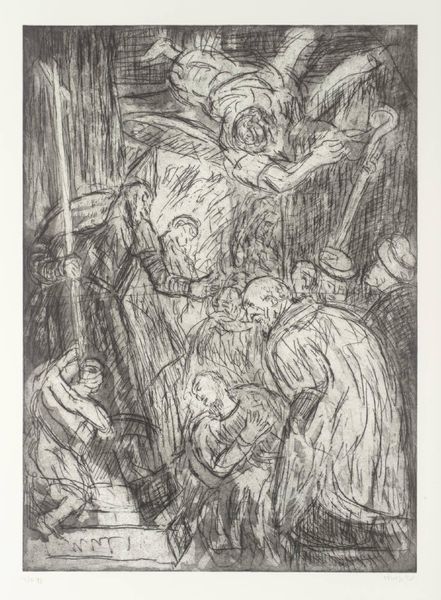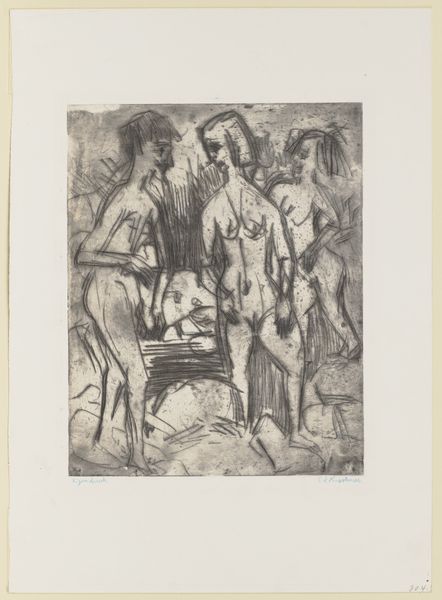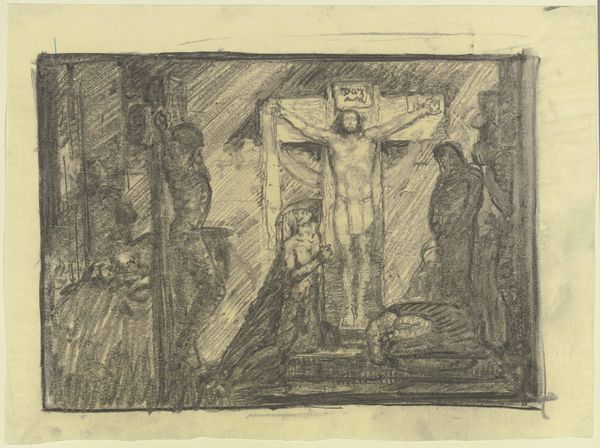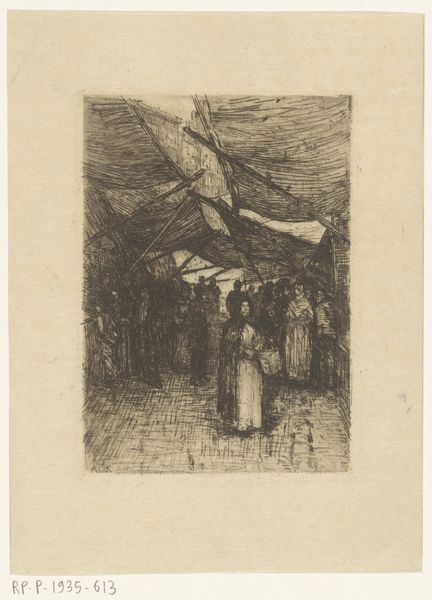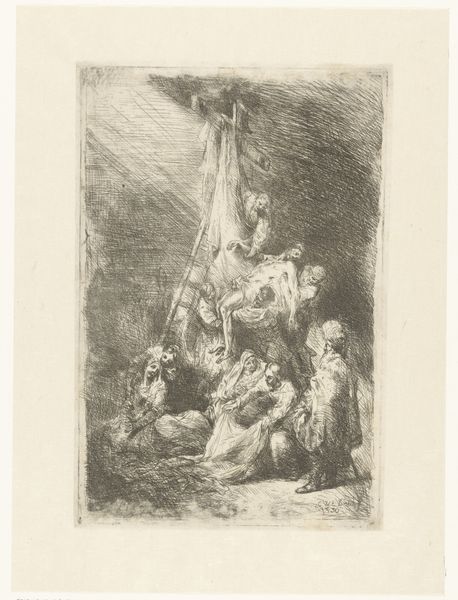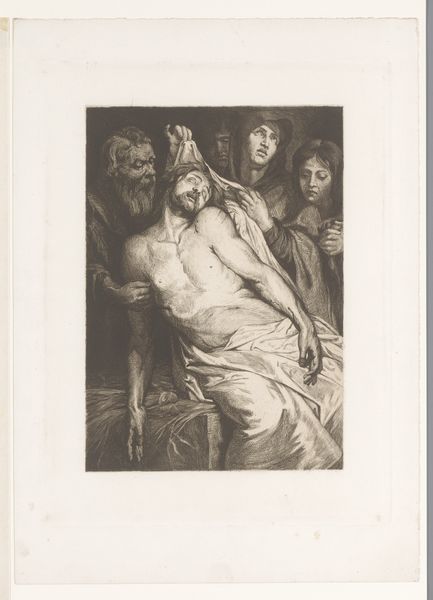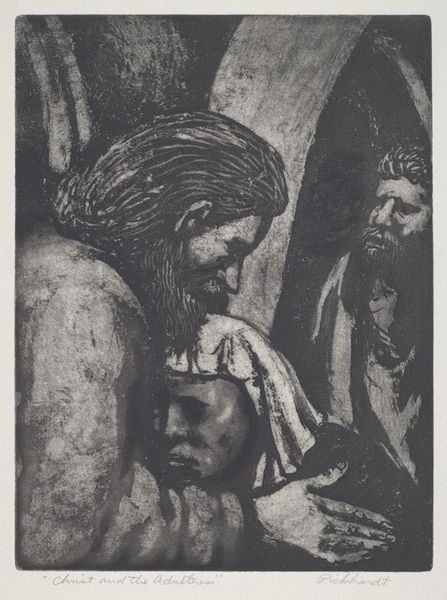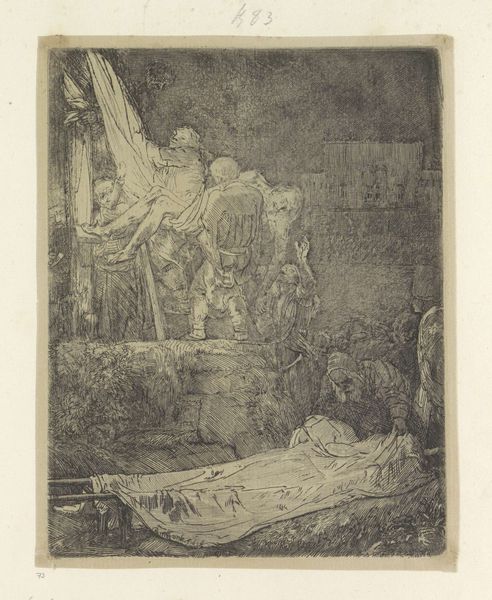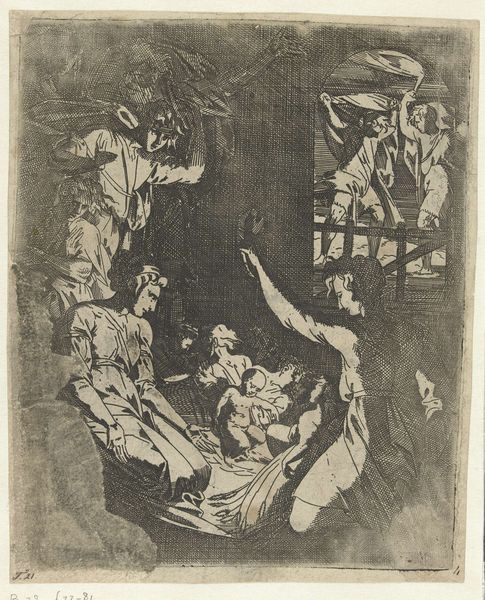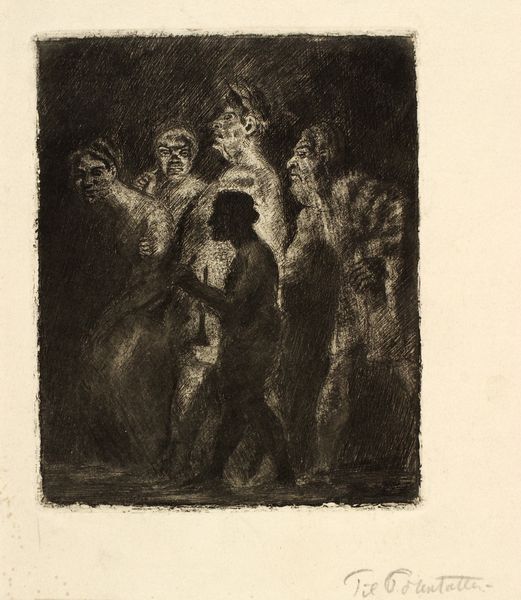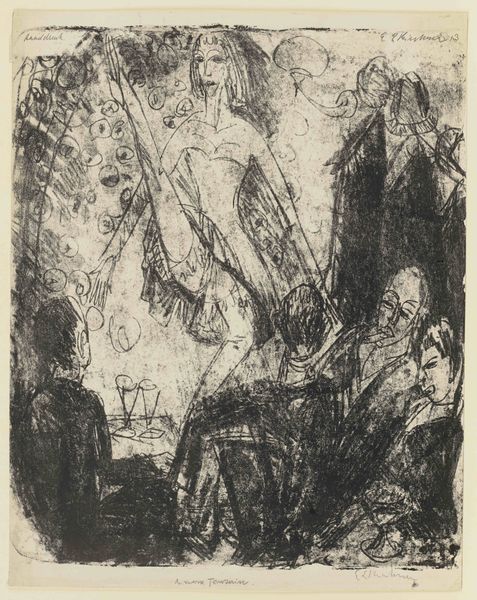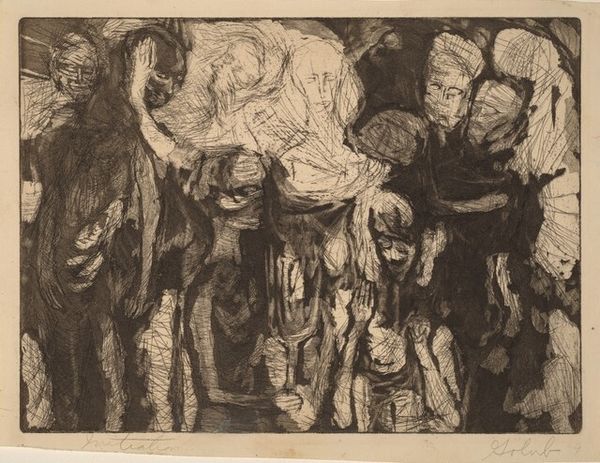
Dimensions: Sheet: 12 7/8 × 8 1/8 in. (32.7 × 20.7 cm) Plate: 9 5/16 × 6 3/16 in. (23.7 × 15.7 cm)
Copyright: Public Domain
Curator: Welcome. Here we have "Diablerie", an etching and intaglio print by François-Nicolas Chifflart, created sometime between 1845 and 1901. It's currently housed here at the Metropolitan Museum of Art. Editor: Whew. It’s…intense. A very dark piece; shadowy figures all crammed together, almost suffocating. You immediately sense the tension—I’m getting major gothic vibes here. Curator: Indeed. Observe how Chifflart employs a high degree of contrast to delineate form. Note especially the figure at the lower register and his robe contrasted by a hovering demonic form with little regard to anatomical correctness in its features, further emphasized with densely cross-hatched background adding to a sense of anxiety. Editor: He almost looks pinned. The lower figure has this expression… resigned. While above and around him… all those twisted faces. Are they mocking or menacing him? And what about the bare, upright figure behind him? He looms like… like the embodiment of guilt itself! Or judgment maybe. Curator: Quite right! Consider too how Chifflart distributes value within the tonal range. See how areas in shade have dense intricate marks but those features illuminated possess smoother gradations emphasizing emotional impact within representational parameters specific towards intaglio production techniques common among artists working around narrative-driven artworks rooted by principles developed during Romanticism. Editor: I can feel myself getting sucked in! He’s not looking at me. Maybe he wants me—us—to fill in what happens next. It almost has a cinematic quality. Very foreboding. Almost claustrophobic in its staging of what could be understood either literally—perhaps a tribunal setting place or one where the setting stands-in something more figuratively profound as it speaks concerning man struggling facing condemnation. Curator: A compelling interpretation that aptly touches at multiple relevant registers when seeking deeper meanings through examination utilizing stylistic traits prominent regarding visual story through nuanced technical choices. This demonstrates why many academics find Chifflart particularly interesting as an exemplar bridging late Romantic sensibilities navigating darker human conditions explored employing classic graphic modalities which speak broadly beyond immediate temporal restraints. Editor: It gives me chills—good chills, I might add—in realizing artworks similar this could touch upon questions about existential truths regarding power or consequences throughout societies despite vast differences ranging throughout various histories existing globally. Perhaps such connections serve toward greater individual or unified introspective contemplation for humanity's potential overall pathing together moving ever-forwards amidst persistent dilemmas. Curator: Yes. The technical capabilities coupled with artistic sentiment converge, producing a piece remarkably insightful regarding artistic development from older lineages into increasingly more nuanced conversations applicable far beyond Chifflart's original time and concerns surrounding etching mediums.
Comments
No comments
Be the first to comment and join the conversation on the ultimate creative platform.
